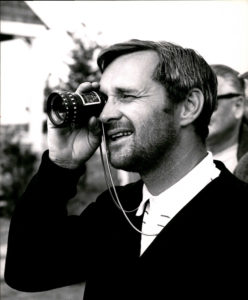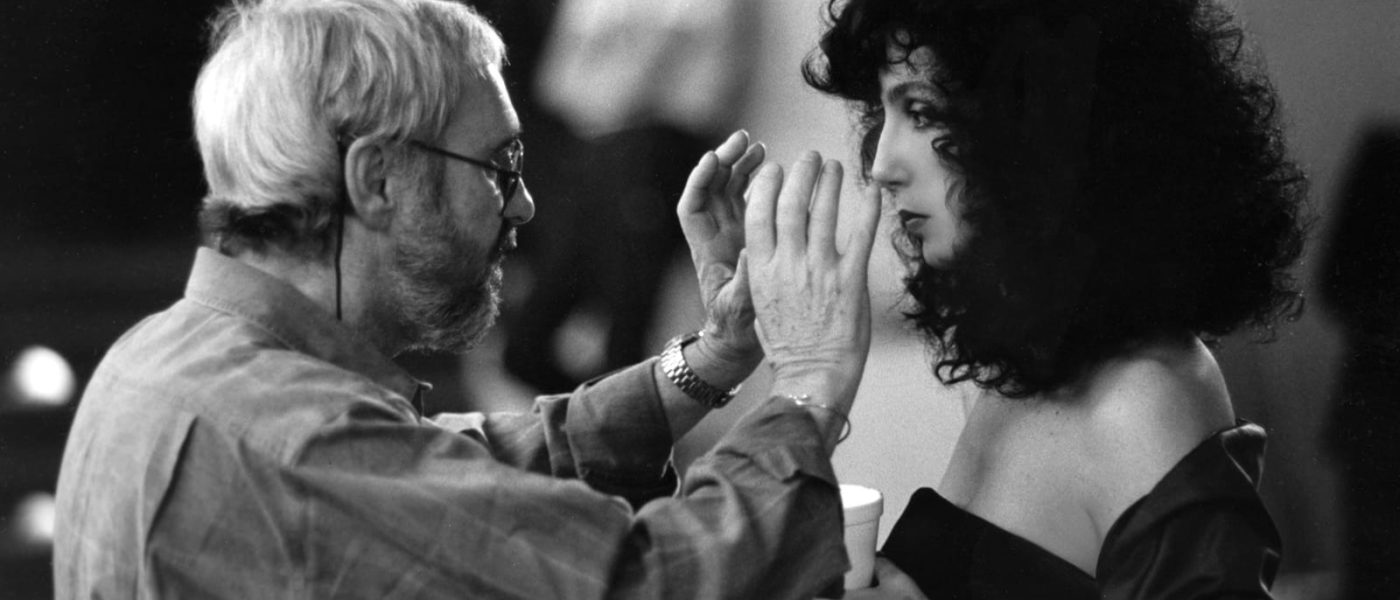The Dynamic Life Story of the Diverse Director of Moonstruck, In the Heat of the Night, and Fiddler on the Roof.
WRITTEN BY IRA WELLS/SUTHERLAND HOUSE/2021

For nearly 100 years, seminal filmmaker Norman Jewison has told stories from almost every angle. To call his filmography diverse is an understatement. His work spans countries, time periods, genre, religions, tonalities, scale, and perspectives. His list of “greatest hits” speaks for itself: In the Heat of the Night. The Thomas Crown Affair. Fiddler on the Roof. Jesus Christ Superstar. Moonstruck. It goes on.
When Jewison is good, he’s great- his earned notoriety backs this up. All too often, however, he’s been misunderstood. Oscars (for his films, their actors, and even lifetime achievement, though never for directing) and momentary acclaim have given way to canonization, even as he’s been chronically mislabeled. He is not commercially driven, nor subject to cultural whims. Despite his name he is not in fact Jewish, and despite his mainstream success, he is not a creature of Hollywood. He is not American, nor British, though he’s lived extensively in both places. His journey, though, from live television directorial genius in his native Toronto to becoming ensconced as one of the most venerated filmmakers of the second half of the 20th century is defined by his restless interest in all these things which he’s not, those things which he is, and still more. The curiosity of Norman Jewison is nothing if not expansive.
Straddling the awkward gulf between the classic studio system and the rebellious bluster of “New Hollywood”, Jewison managed to not only hang in there, but thrive greatly making films that he wanted to make. He is indeed a rarest of specimens among directors, coupling mainstream success (and if not always success, then at least visibility) with personal passions- passions as diverse and humanistic as the man himself. Jewison somehow fits in everywhere and nowhere, in a way that, in retrospect, is all his own. Without formula or crass methodology, Jewison proved to be both an artist and a team player.
Throughout his career, he’s been lauded, dismissed, and taken for granted more often than most any legacy filmmaker of the second half of the twentieth century. (He is topped in this manner only perhaps by Spielberg). Not a utilitarian craftsman but also not an auteur, Jewison always managed to travel his many roads remaining as true to himself and his material as the fickle movie business would allow. Per Ira Wells’s new Jewison biography, the filmmaker never compromised. He never played the game of “one for me, one for the studio” (a common tactic of successful directors described by Martin Scorsese in his documentary A Personal Journey Through American Cinema). The book also makes it very clear that it was never easy.

In all this disparity, it’s understandable how a distillation of such a career is, first and foremost, perhaps an insurmountable challenge. This is where Wells makes it look easy. In the author’s beyond-thorough investigations, research, compiling, and even face time with the man himself, Wells manages to connect dots that seem, even at a prolonged glance, unconnectable. In such, we come to know Jewison and his many facets: Canadian wunderkind, nicest guy in Hollywood, stubborn mule, anti-authoritarian mentor (to the likes of Hal Ashby, for one), outspoken liberal, devoted family man, obsessive gardener, surly Oscar nominee, and stalwart industry icon. Somehow, it all flows. In this sense, in the world of often straightforward directorial profiles, Norman Jewison: A Director’s Life throws down a gauntlet.
That is not to say that Norman Jewison is without imperfections. Though Wells mainly avoids slipping into the trap of lapsing away from his specific subject and into making-of detailing of the films, previously vastly documented titles such as In the Heat of the Night and Fiddler are unpacked beyond Jewison’s personal narrative. In these cases, detours into weather conditions and actor quirks are taken, eventually, though, looping back to the particular travails of Jewison himself.
By contrast, 1969’s Gaily, Gaily, an early major production set in 1910 and based on the life of journalist Ben Hecht, is all but skipped over. The film remains obscure to this day and wields the notoriety of being Jewison’s first big failure at the box office. The repercussions must’ve been resonant, but here, ‘tis but a blip. In this time, the emotional destruction Jewison must’ve experienced when his close association with Robert Kennedy was terminated by assassination is merely implied. Finally, only once in the 400-plus pages of Norman Jewison is there a reference to his “sexual exploits”. Considering the amount time spent in and around his longtime marriage to Dixie (the union ended with her death in 2004), this tossed-off dirty mention can’t help but warrant elaboration.

Yet, Wells nails it more often not. In his linear film-by-film telling of Jewison’s life, his sections on Moonstruck, In Country, Bogus, and The Hurricane stand out as particularly tethered to the director’s motivations, working methods, and affects. The portion on Thomas Crown is a particular treat, reading almost as a cat-and-mouse caper of its own between Jewison and fragile, ego-wrought star Steve McQueen. Their one-upmanship for who’s got “the juice” on set not only careens into the sublime (a comical manhood-measuring competition of the biggest coffee mug gives way to McQueen’s dangerous testosterone-and-insecurity fueled fits and an exasperated Jewison’s leaving the set during the beach go-cart scene) but pays off throughout the rest of the book.
Narratives are woven and reoccurring details carefully echo. The prose is smart yet widely accessible, not at all unlike Jewison’s filmography. Wells expresses a full awareness that Jewison’s fierce battles to tell stories that are culturally not his own stemmed from his best-intentions white liberalism of his time. Though a wealthy white male, the empathic Jewison harnessed a legitimate desire to give voice to minority struggles, cultural scars, and differing inner pains. Yet, the fact that times have changed and perhaps Malcolm X was much better off with Spike Lee is clearly not lost on Wells, even as it apparently was lost on the frustrated Jewison when he lost the project, which he’d been extensively developing.
Even still, the prolific Jewison (though now, at age ninety-five, retired) has been sharply aware of precisely who he is as a filmmaker. On page 215, Wells quotes the director: “I am not interested technically in the making of films, I’m not an intellectual filmmaker. I’m not a cerebral filmmaker. I make emotional films. And I want my audience to become emotionally involved in what I do.” Though sometimes a chameleon, sometimes an anomaly, sometimes an amalgam, and in many ways unpredictable, we come away from Norman Jewison with a very clear understanding of the man, the sprocket holes of his disparate accomplishments now clicking through the light more harmoniously than ever.


